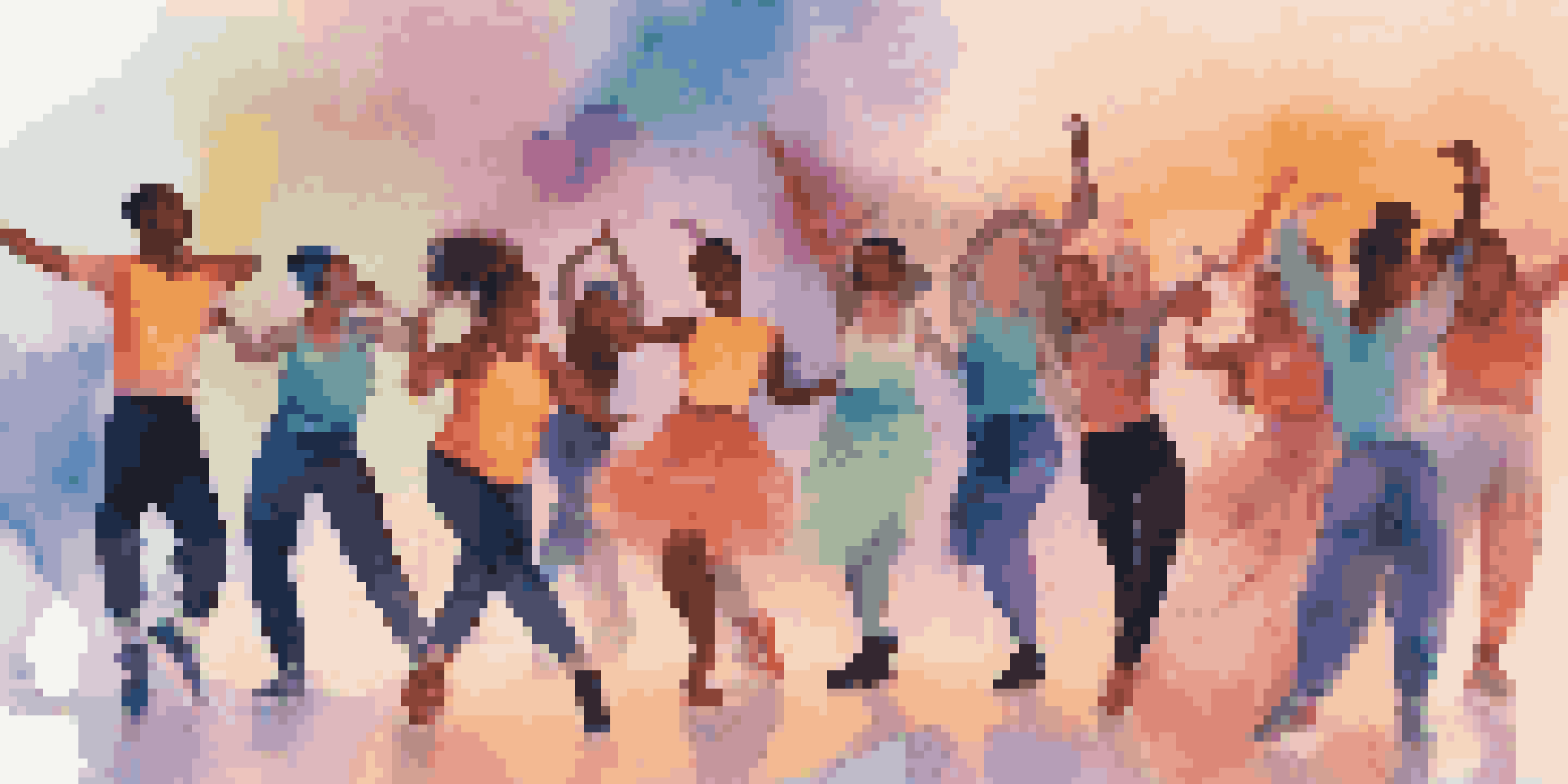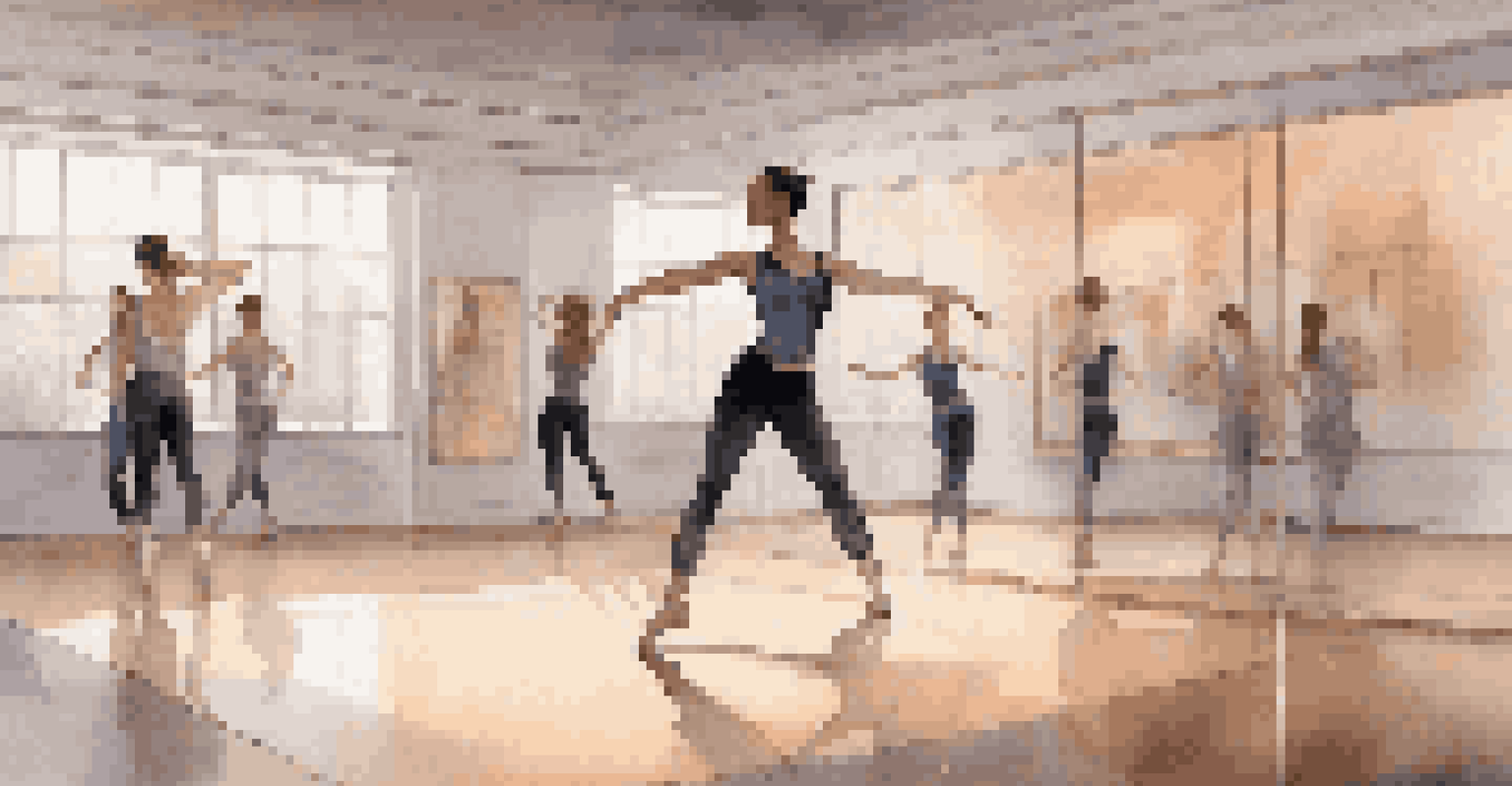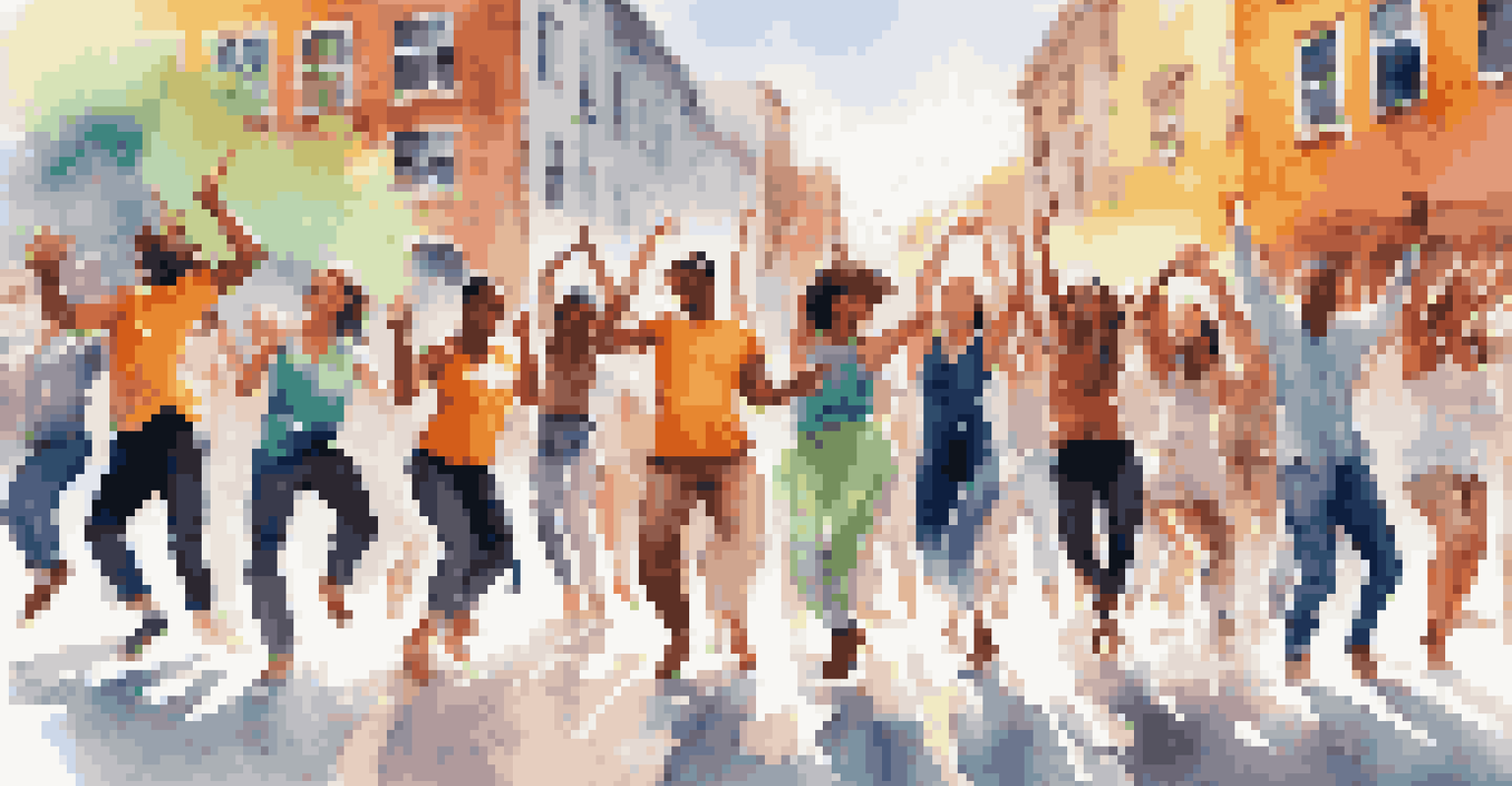The Impact of Online Communities on Dance Styles and Trends

The Rise of Digital Dance Communities
In recent years, online platforms have revolutionized how dancers connect. Communities on social media and dedicated dance websites allow enthusiasts to share videos, tutorials, and critiques. This virtual gathering has created a vibrant ecosystem where dancers of all levels can thrive.
Dance is the hidden language of the soul.
The accessibility of these communities means that anyone with an internet connection can join in. From TikTok challenges to YouTube dance tutorials, the barriers to entry for aspiring dancers have all but vanished. This inclusivity fosters a diverse range of styles and expressions, enriching the dance landscape.
Moreover, these digital connections often lead to real-world collaborations and performances. Dancers not only learn from one another online but also form friendships and partnerships that transcend geographic boundaries, sparking creativity in ways traditional settings may not.
Influence of Social Media on Dance Styles
Social media platforms like Instagram and TikTok have become powerful influencers in the dance world. Viral trends often emerge from these sites, dictating what's popular at any given moment. A simple hashtag can turn a new dance move into a global sensation overnight.

This rapid dissemination of dance trends means styles can evolve at an unprecedented pace. Dancers are constantly adapting and innovating, blending traditional techniques with contemporary influences. The result is a fusion of styles that reflects the ever-changing cultural landscape.
Digital Communities Enhance Dance Culture
Online platforms have revolutionized dance by connecting enthusiasts, fostering creativity, and enabling real-world collaborations.
However, this can also create pressures to conform to trends for visibility. Dancers may feel compelled to follow what’s popular rather than exploring their unique styles, leading to a homogenization of creativity in some instances.
The Role of Dance Challenges in Community Building
Dance challenges have become a staple of online dance culture, encouraging participation and engagement. These challenges invite dancers to replicate a specific routine, often with a unique twist. This not only fosters a sense of community but also inspires creativity among participants.
The dance is a poem of which each movement is a word.
When individuals share their versions of the same challenge, it creates a collective experience. Dancers celebrate each other's efforts, often commenting and sharing to spread the joy further. This sense of belonging can be incredibly motivating for those who may feel isolated in their dance journeys.
Furthermore, these challenges often serve as a platform for lesser-known dancers to gain recognition. A well-executed challenge can lead to opportunities, such as collaborations or even professional gigs, showcasing the talent that exists within these online communities.
Emergence of New Dance Styles Through Collaboration
Collaboration is a key element of online dance communities, leading to the emergence of new styles. Dancers from various backgrounds often come together to create original routines that blend different genres. This cross-pollination of ideas is a driving force in the evolution of dance.
For example, the fusion of hip-hop with contemporary styles has produced fresh and exciting choreography. The internet allows dancers to experiment with these combinations and share the results, often garnering widespread attention. As a result, new sub-genres continue to emerge, reflecting the diversity of the dance community.
Social Media Shapes Dance Trends
Platforms like TikTok and Instagram rapidly spread dance styles, influencing choreography while also pressuring dancers to conform.
Moreover, collaborative projects can lead to the establishment of new trends that capture the public's imagination. When dancers unite their unique influences, it sparks innovation and keeps the dance scene vibrant and alive.
The Importance of Tutorials in Skill Development
Online communities have made dance education more accessible than ever through tutorials. Dancers can find step-by-step guides for various styles, allowing them to learn at their own pace. This democratization of dance education empowers individuals to pursue their passion without the constraints of traditional classes.
Many dancers share their personal tips and tricks, creating a rich repository of knowledge. This sharing culture fosters an environment of continuous learning and improvement, as dancers feel supported in their journeys. It’s like having a virtual dance teacher available 24/7!
Additionally, as dancers master new skills, they often pay it forward by creating their own tutorials. This cycle of teaching and learning strengthens the community, ensuring that knowledge and creativity flow freely among its members.
The Impact of Streaming Platforms on Dance Popularity
Streaming platforms like YouTube and Netflix have showcased dance like never before, bringing it to a wider audience. Documentaries, dance competitions, and performances available online allow viewers to appreciate the artistry behind various styles. This exposure can lead to increased interest and participation in dance.
As audiences become more familiar with different styles, they are more likely to seek out classes or join communities. This ripple effect enhances the overall popularity of dance as an art form, bridging the gap between performers and spectators.
Challenges Impact Online Dance Spaces
Despite the benefits, online dance communities face issues like negativity and exclusivity, which can hinder creativity and participation.
Moreover, dancers often use these platforms to showcase their talents, leading to increased visibility and opportunities. The potential for viral fame can transform a dancer's career, highlighting the significant impact of streaming on the dance community.
Challenges Faced by Online Dance Communities
While online dance communities offer numerous benefits, they also face challenges. Issues like negative comments and cyberbullying can discourage dancers from sharing their work. This can create a toxic environment that stifles creativity and leads to self-doubt among participants.
Additionally, the pressure to maintain a certain level of performance can be overwhelming. Dancers may feel the need to constantly produce content to stay relevant, which can lead to burnout. Balancing personal expression with audience expectations is a delicate tightrope to walk.

Lastly, not all online spaces foster inclusivity. Some communities may inadvertently reinforce exclusivity, making it difficult for newcomers to feel welcome. Addressing these challenges is crucial to ensuring that online dance environments remain supportive and nurturing.